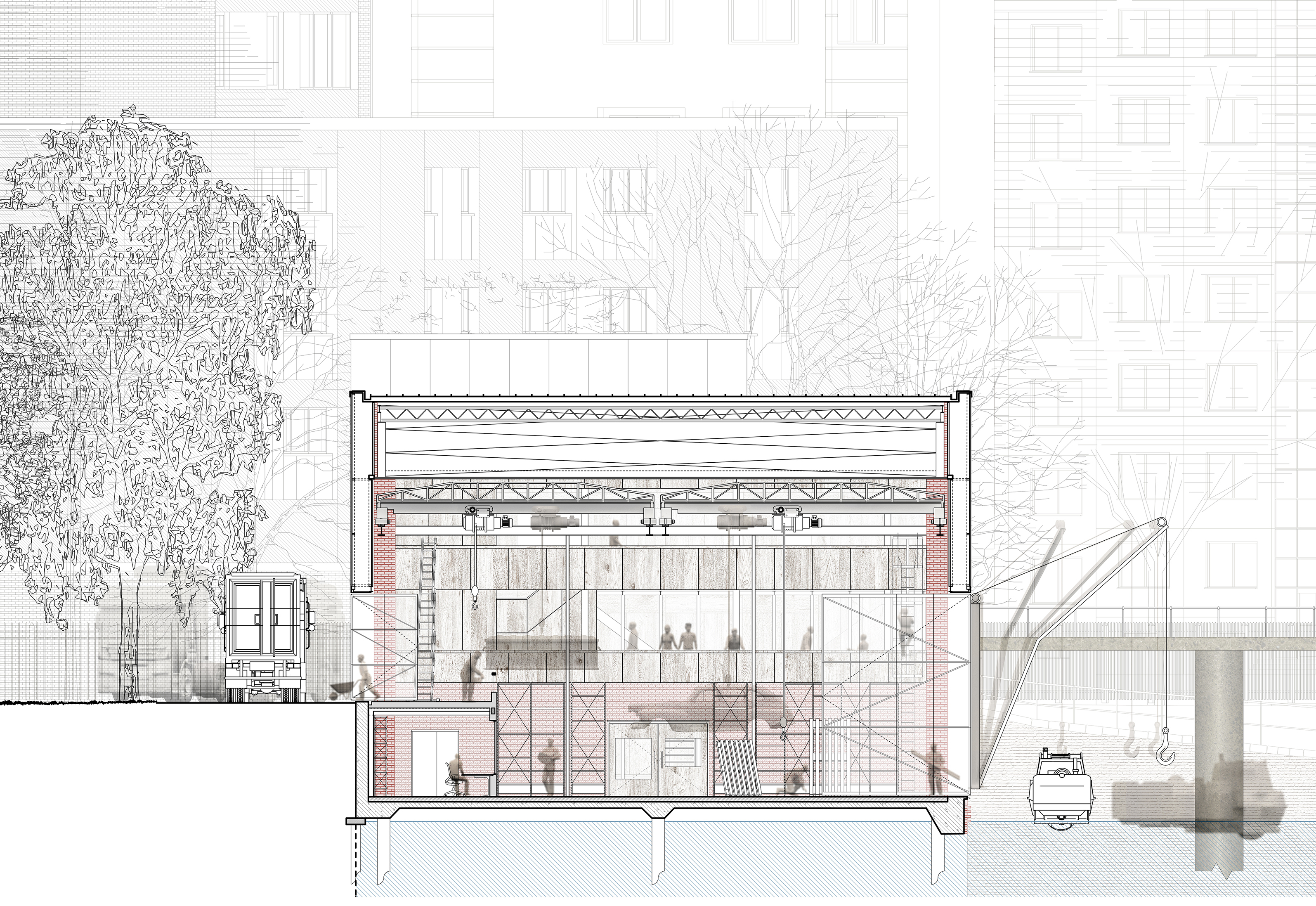Unit 3 Thesis Project: The Museum of Joyful Salvaging
Director Pippa Nissen, Senior Associate Marie-Lise Oulmont and Associates Andrea Hickey and Kate Coghlan of Nissen Richards Studio are leading a new postgraduate teaching unit at London Metropolitan University. The unit challenged students to design a ‘Museum for Now’. Here is one of the responses to that challenge.
In today’s climate, we as a collective species are questioning our impact on the landscape, both artificial and natural. Traces of human activity are left behind, even in a seemingly untouched rural landscape.
Millfields Park is a site of contradictions.
It sits between an industrial active power plant, and a mixture of flat blocks, all newly built as Hackney gentrifies. Simultaneously, it sits beside the River Lea, an important body of water that has connected London to the greater country for centuries. Hackney Marshes lies beyond, on the opposite bank.
The perceived natural landscape and programme of the park as a green space of recreation conflict with the more industrial heritage of the site and its immediate context. With this gentrification pushing people out of London housing and into the river, canal and river living has become more common, especially over the last decade.
The river has become an ‘artifact’, holding objects and detritus collected over the millenniums during its existence, a record of human activity buried under earth and water. These objects speak of our relationship to the landscape, from religious worship, invasions and battles, beauty and waste.
The objects discovered in the water are treated as equal, regardless of its monetary or perceived cultural value. Plastic bags and discarded metal cans speak of how the growing population has neglected this precious natural resource, and canal living is forcing more pollutants into the water. The river has been facing significant issues surrounding litter, and recently the London Canal Trust has started charitable initiatives such as the Plastics challenge. By recycling the litter, what was once a negative is transformed to positive.

It is this act, of re-use and repurpose, that my museum wishes to celebrate. Artworks and sculptures, from scavenged materials, create methodologies by which the objects found can be used as a learning tool; by reconstruction, re purposing, or even bringing a local community together to care for the environment.
This idea of re-purposing extended to the design. The site was carefully chosen to not occupy the valuable open land of the park, instead choosing part of the neglected river bank, projecting into the wide river. A recyclable steel frame and polycarbonate cladding system, all constructed using standard, readily available components, creates a lean structure that can be easily dismounted when the lifetime of the building reaches its end, and a new programme can take its place. The structural columns and the roof remain, leaving behind a building that can be easily adapted to suit a multitude of programmes, inspired by Cedric Price’s Fun Palace.
A large shed-like structure, with a civic scale, provides an open, reconfigurable space where these objects can be displayed. Workshops held by artists can take place within, and the process of recycling can be expedited by creating a series of outposts (including the museum) along the river to process the waste more efficiently.
This direct relationship to the water links the objects as a collection back to their origin, as one reflects upon the objects so too can one reflect upon the river.

